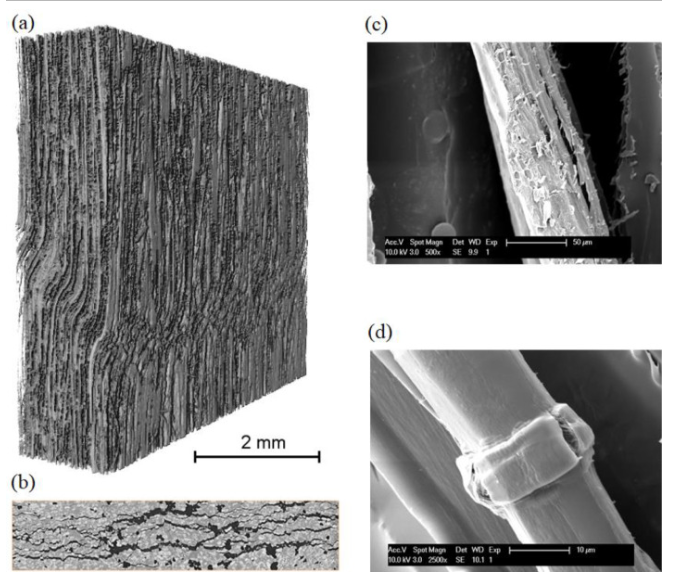Continuum damage micromechanics description of the compressive failure mechanisms in sustainable biocomposites and experimental validation
In this study, the researchers investigated the compressive failure mechanisms in flax fiber composites, a promising eco-friendly alternative to synthetic composite materials, through both numerical simulations and experimental analysis. They examined the reasons behind the low compressive strength in comparison to tensile strength, focusing on the compressive-to-tensile strength ratio. A novel thermodynamically consistent continuum damage micromechanics model was introduced to capture the events occurring at the fiber-matrix scale. This model provided a detailed description of the microstructure of a unidirectional composite and incorporated the instantaneous constitutive behavior of both the matrix and fibers. It was discovered that flax fibers exhibited characteristics of elastic-plastic-damaged solids under compression. Additionally, the researchers found that fiber damage played a crucial role in the compressive failure of flax fiber composites, serving as a significant determinant of the material’s compressive stress-strain response. By utilizing X-ray Computed Tomography (XCT) and Scanning Electron Microscopy (SEM), the team identified the specific forms of fiber damage as intra-technical fiber splitting and elementary fiber crushing. Given the similarities in microstructure among natural fibers, it is likely that these same micro-mechanisms are present in other bio-based fibers and their composites.

Failure mechanisms of flax/epoxy composite under uniaxial compression along the fiber direction. (a) Volume rendering of a 3D dataset acquired by X-ray Computed Tomography (XCT) illustrating kink band formation. The kink band is well-defined and inclined to the loading direction. Outside the kink band, the fibers do not rotate and remain almost straight. (b) Transversal cut through the image data illustrating (most likely) intra-technical fiber splitting within the kinked region. (c) Scanning Electron Microscopy (SEM) image illustrating intra-technical fiber splitting within the kinked region. (d) SEM image of elementary fiber crushing within the kinked region.